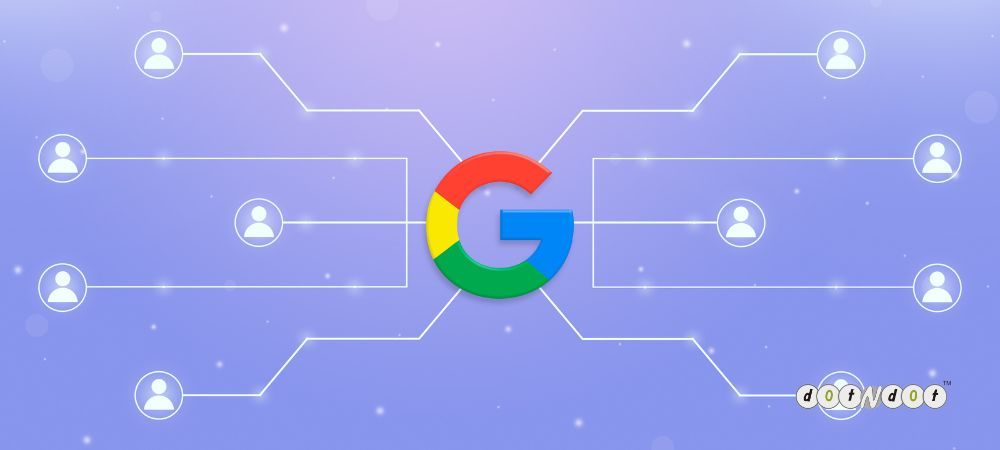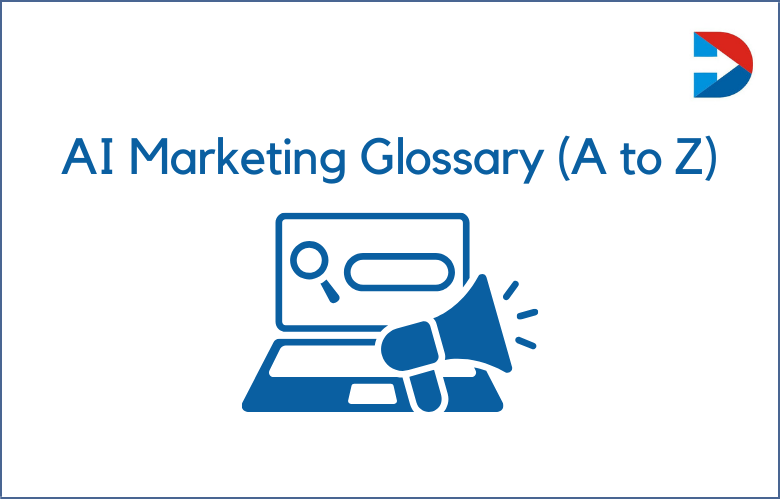
Google has become the leading source for all small-scale or large-scale businesses to promote their brand. Developing a strategy on Google is showing the instant results of getting potential customers. That, too, with real-time customers.
The three terms, GDN, DFA, and DBM, play a role in DoubleClick’s Google Ads, which the brands should deal with. Most publishers or advertisers get confused with the terms GDN, DFA, and DBM. Before going to learn about them, we should know about Google DoubleClick.
DoubleClick
Google DoubleClick advertising is an integrated advertising technology. It is where advertisers and business brands can launch and manage ad campaigns.
Due to this, the brands can display their ads to a high volume of customers.
The topmost marketers, agencies, publishers, and ad networks use the DoubleClick. Primarily to serve and manage online advertising.
Use of DoubleClick advertising, the brands are finding the best strategy, perhaps in digital media advertising, by fetching effective results.
It generates the analytics solutions that you need to target its paid ad management.
The advertisers and publishers can make expert media planning, video, ad serving, mobile, and rich media where DoubleClick products like DFA and DBM occur.
Google Display Network (GDN)
The advertisers or publishers can reach the people browsing the websites and checking Gmail on their own. It happens while using mobile apps and devices and while watching YouTube videos.
Google Display Network will use the DoubleClick inventory as an ad exchange.
How does the Google Display Network (GDN) work?
With the help of the Google Display Network, brands can reach the exact audience by displaying their intended messages to the relevant customers at the right time.
The involvement of audiences helps you find new customers and engage existing ones.
It will enable you to target the customers showing much interest in your brand products.
You can re-engage the existing audience using the data and remarketing lists as a marketing strategy.
You are defending the existing audience and landing page. Automation targeting can drive more conversion by fetching high-performing audiences.
Through automation, Google ads can find which audience is most relevant to you. However, through automated bidding, you can meet your return on investment.
How can you deliver ads using the Google Display Network?
When people search for specific products or services, the search network reaches them.
At the same time, the Google Display Network captures their attention earlier in the buying process.
The key to an advertising strategy is you can learn by using the Google Display Network. You can display your product for those people before they search for other brands.
DoubleClick for Advertiser (DFA)
- DoubleClick for advertisers is the platform for ad serving and ad management.
- We can upload and serve the GDN or another ad network banner using DFA.
- If you have a direct placement banner for a specific website, you can also use it on DFA.
- Using DFA, you can target and handle ads, media planning, report display ads, and optimize. Also, you can serve the creative banner.
- For advertisers, DFA works as the foundation of the DoubleClick digital ad management platform. It includes DoubleClick Rich Media, DoubleClick Search, and DoubleClick Ad Exchange.
- All these together help the advertisers or marketers to deal with online advertising as experts.
DoubleClick Bid Manager
DoubleClick Bid Manager (DBM) is the programmatic ad buying demand-side platform through bidding, especially on high-quality ad inventory. It occurs from multiple ad marketplaces along with Google Display Network.
The DSP is used to create ad campaigns similar to GDN. While using DSPs, the advertisers can access the vendor-neutral real-time bidding ecosystem.
However, GDN will allow advertisers to run campaigns within the Google ad network.
Demand Side Platform generates more impressions than GDN
The audience moves to digital categories like social, video, display, native, mobile, search Fac, ebook, etc. As they don’t stick to Google Display Network.
How is it possible to reach those customers?
Therefore, the advertisers can access the GDN inventory using the DoubleClick Bid Manager and multiple ad marketplaces.
Benefits of DoubleClick Bid Manager
Real-time data:
Real-time cookie updates take place, which helps provide any information, especially from the organized segmented audience data from different sources.
Reliable customer conversations:
The agreement communication takes place across the platforms to buy the video, mobile, and display ad campaigns in one place.
Proprietary algorithms and data:
Influence the segments and machine learning of Google’s exclusive audience. That executes real-time bidding impression changes to precisely bid, exact target, and optimize the campaigns effectively.
No time consumption:
The elimination of delays with creatives, audiences, pixels, and shared placements occurs.
Interaction between the DoubleClick Bid Manager and the rest of the DoubleClick by Google:
Refined audience information:
Synchronize the remarketing lists, especially from the DoubleClick search. Also, custom audience lists were created in DoubleClick Campaign Manager.
Influence patented Google Audience segments available in the DoubleClick Bid Manager.
Integrated platform:
The advertisers can use the same cookies and floodlights for tracking and reporting overall tools in DoubleClick.
Gain extreme programmatic reach with 100% retention of data.
Integrated insights:
Perhaps the advertisers will get the campaign knowledge from the DoubleClick Campaign Manager, Google Analytics, and DoubleClick Search.
Google Marketing Platform
Google Marketing Platform is an integrated analytics and advertising platform. Through this, you can establish a strong marketing team by collaborating integrations between the Google Analytics 360 Suite and DoubleClick.
Advantages of using Google Marketing Platform
Delivering faster marketing:
Using the automation concept, you can deliver more innovative and faster marketing. Moreover, you can spend your time digging into advanced strategies to launch effective ad campaigns.
Deeper understanding audience:
You can integrate your data to have a complete vision of your data customers. On the other hand, advertisers can figure out the most relevant audiences by connecting data with Google cross-devices—this is where you can understand your audience’s expectations.
Control on investment:
Moreover, marketers can find which marketing campaigns are working. Also, it can improve the performance of ad campaigns by taking immediate action.
Sharing insights among the team:
Reporting data in one place will enable each team member to view your audience, business results, and media. Where the sharing of insights also takes place.
Google Programmatic Advertising:
Programmatic advertising is, and all the marketers are slanting towards Google Programmatic Advertising.
Using technology in buying and selling the ad inventory is programmatic advertising. It occurs through data-driven, and the automated procedure is programmatic advertising.
Google Programmatic Advertising launches real-time bidding for inventory and artificial intelligence technologies over the display, mobile, social channels, video, etc.
It was initially established with the relationship between the advertisers and publishers. The publishers are known as sellers, and the advertisers as buyers.
Similarly, the agencies are helping the advertisers to reach the target audience.
How does Google Programmatic Advertising work?
- As we discussed, the technology of Artificial Intelligence helps to know the visitor behavior for the ad campaigns they run.
- It works as the traceability of the audience, making them more interested in their products or services.
- The programmatic companies will gather that audience data by using either 1st party or 3rd party data.
- Therefore, the DSPs, DMPs, and SSPs are used in programmatic media buying.
- The DMPs will help collect and analyze the cookie data that allows marketers to make vital decisions on targeting their audience. We can skip the DSPs, as we discussed earlier.
- The SSPs will mainly report details like how long the visitors spend on a specific website and how many web pages they view.
Top concerns the brands think about while launching Programmatic Advertising
Ad fraud:
More than 1/3rd of online media traffic goes over fraud; hence, it is the most concerning factor when using programmatic advertising.
The fraud of advertising traffic can be found based on user behavior in programmatic advertising.
It also helps identify quality leads that are more likely to convert sales to improve ROI.
Brand safety:
Most brands are integrating with programmatic advertisers who ensure the brand’s safety.
These companies want to display their ads on brand-safe web pages. Hence, programmatic advertising insights will let marketers drive the best campaign results.
Viewability:
If the ad inventory is below the fold (BTF) or above the fold (ATF), the marketers can balance their ad campaign using programmatic advertising.
When the campaign is targeted to generate conversions and leads, ATF is suggested to get the maximum visibility of ad campaigns.
Google Display & Video 360
Demand Side Platform of Google enables advertisers and agencies to access the collection of videos, mobile inventory, native, and display in real-time.
Google Display & Video 360 is the development and association of DoubleClick Bid Manager, Studio, Audience Center, and Campaign Manager.
However, marketers can plan campaigns, buy and find inventory, and measure and optimize campaigns by organizing the audience using a single Display & Video 360 tool.
Keyword targeting is available in Display & Video 360, similar to Google Ads.
But the only thing is that Display & Video 360 helps find contextual keywords instead of specific search keyword targeting.
Critical features of Display & Video 360
Third-party data:
With Display & Video 360, marketers can find an audience interested in your products and more likely to purchase. Marketers can make use of more than 35 third-party data providers.
Bidding strategies:
The brands can develop advanced strategies while bidding to launch the ad campaigns.
Creative options:
Build and manage creatives using Ad Canvas and edit the creatives in real-time by using Display & Video 360.
Device targeting:
The advertisers can target all types of device audiences. It is integrated with more than 90 ad exchanges and 1 billion websites. Hence, the brands can advertise on all screens, like Smartphones, Connected TVs, tablets, and Desktops.
Conclusion
Business brands should consider all these aspects before launching ad campaigns on Google. By using all these tools, they reach the targeted audience in a short period.



